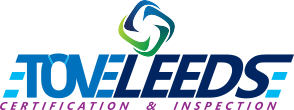Warehousing is an industry with a wide range of issues and risks that require careful safety management to prevent accidents. Each warehouse is unique in its design, equipment and operation thus for this article we will merely outline the major areas of risk and the broad brush management strategy required to help make the work and business safer.
TRAFFIC:
The overriding risk within most warehouse environments is the movement of vehicles – both within the warehouse yard and indeed the movement of fork lift trucks within the warehouse environment itself.
It is essential that traffic risks are managed; the following pathway highlights the main controls:
- Attempt to remove blind spots such as sharp corners or doors that exit not roadways. Use pedestrian barriers near to doors and main staff walkways to physically separate people and vehicles where possible.
- Clearly mark any pedestrian walkways for operational needs within the yard and warehouse floor – use zebra crossings where people will cross vehicle routes
- Where vehicle routes narrow or there are entrances to the warehouse ensure people and vehicles are separated. Use a pedestrian entrance and a vehicle entrance – these are high risk spots.
- Ensure lighting is adequate.
- All entrances to the operational area should have warning signs for moving vehicles and fork lift trucks operating.
- Site speed limits should be displayed and enforced.
- Use a traffic management system – ideally a one way route especially in the yard.
- Ensure all staff are trained
- Ensure all staff and visitors wear high visibility jackets in areas where vehicles are moving – this includes the main warehouse due to fork lift trucks.
- Ensure all vehicles are maintained, that owned lorries and vans have reversing alarms and that warning lights are working
The dock doors are a very high risk area – ensure you develop a full safe system of work for this area, ideally keeping people away from the area due to the risks from reversing vehicles with escape areas.
FORK LIFT TRUCKS:
These require safe systems of work to be developed.
- All operators must be trained, in many countries this is a legal requirement, and competent. The training must be for the specific type of fork lift truck.
- The truck themselves must be maintained and must be checked/certificated by a competent person each year.
- The safe operation methods of the Fork Lift Truck must be adhered to by the driver.
- The work area must be tidy and level/even.
- Unless a specific man cage is available people must not be raised on forks.
HEIGHTS:
Many warehouses operate mezzanine floors – these may have gates/doors to allow loads to be lifted via fork lift truck.
- All such areas must have adequate safety barriers and kick boards
- Where openings exist for fork lift trucks to move pallets between levels a safe system of work and specifically designed gates are required to ensure the heights are guarded and safe at all times
- Where pallets are stacked near the edge the pallets must be shrink wrapped – it may also be useful to extend the safety barrier to a greater height to ensure that stacks cannot fall onto the lower level.
STACKS:
- Ensure all staff are trained
- Ensure that supervisors check all stacks frequently
- High stacks should be shrink wrapped and tied as required.
- No person should climb a stack or shelving.
MANUAL HANDLING:
Ensure that work is assessed to reduce risks such as twisting, repetitive handling by design and by providing suitable equipment. Equally safe level work areas, adequate benches, adequate lighting can all improve the safety of manual handling tasks.
Ensure all staff are suitably trained in manual handling tasks
HOUSEKEEPING:
Good housekeeping is essential for maintaining safety in such environments:
- Ensure waste is collected and removed – plastic, pallets etc. all create trip hazards, block fire doors and allow fire risks to increase.
- Ensure that banding is cut and discarded into waste bins.
FIRE:
The nature of goods being handled, the age of the warehouse, the fire protection in place and other factors all impact on the fire risks of a warehouse. However we can generally say that to reduce risks:
- Ensure supervisors inspect their area regularly – fire exits and fire lanes must be kept clear.
- Ensure you undertake regular fire drills
- Ensure that emergency lighting is correctly positioned – is it blocked by high stacks/shelving.
- Ensure that fire exit signage is clear and visible – the nature of warehouses means that exit signs frequently become obscured. Consider high level signage or floor paint.
GENERAL:
- The company should have a clear safety policy
- The company should have adequate risk assessments for all their work activities
- All operational staff should be in safety boots and high visibility jackets. This rule must also apply to office staff that are required to enter the warehouse.
- Regular safety inspections are conducted.
The range of issues within a warehouse can include many other factors – security concerns in bonded warehouses can impact on emergency measures, fuel is generally used and may need safe systems of work developing, equipment such as break pits, roller trays may reduce some of the work risks but do introduce new risks into the workplace that will require safety systems and training.

Leave A Comment
You must be logged in to post a comment.